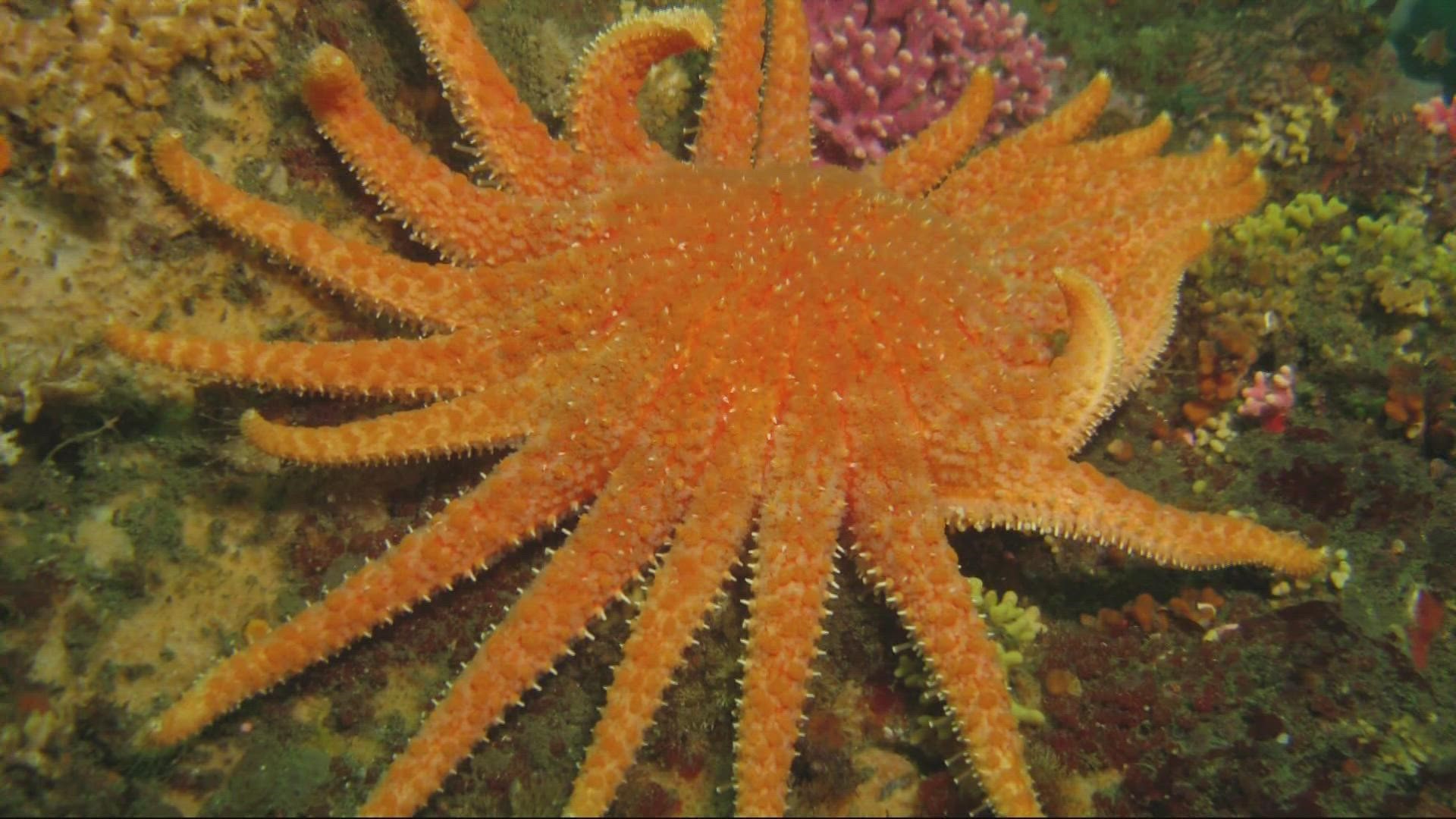PORTLAND, Ore. — Sea stars were once common sights in the tide pools along Oregon’s coast. These days, the creatures are nearly extinct.
Around 2013, a mysterious illness called sea star wasting disease tore through the sea star population all along the west coast leaving the animals on the brink of extinction.
Steve Rumrill, shellfish program lead with the Oregon Department of Fish and Wildlife, said as many as 6 million individual sea stars may have perished within just a couple years.
“By some accounting, this could be the largest marine disease event in history,” he said, noting that in many places, losses were close to 100 percent.
Rumrill helped co-author a recovery plan for one species, the sunflower sea star, which was particularly hard hit by the disease. There are several hurdles to overcome for the animals to return to anything close to their previous numbers. Largest among them, understanding the disease that nearly wiped them out.
There are two leading theories circulating among experts. Some think the sea stars may have fallen victim to a waterborne virus that spread between the animals. Others have hypothesized that perhaps a microbial change made it difficult for the animals to absorb oxygen through their skin, effectively suffocating them.
While the exact cause remains unknown, the results were clear.
“Sea stars have the ability to, through an autoimmune response, cast off damaged parts of their bodies,” Rumrill said. “They would cast off of a ray or just dissolve their whole body. Some people have described it as just melting away.”
The demise of the sunflower sea star is particularly troubling, Rumrill said. The animals, which can grow up to 3 feet wide with as many as 24 arms, are prolific predators, with sea urchins their most common prey. Urchins feed on kelp and seaweed and, without sea stars to keep their numbers in check, urchin numbers have exploded and kelp has declined.
“The decline in sunflower sea stars has probably been related to the increase in sea urchins and a decline in kelp and seaweeds,” Rumrill said.
Oregon’s kelp forests play a key role in the aquatic ecosystem, with fish, invertebrates and marine mammals relying on the oversized algae for food and refuge.
Scientists have yet to find a direct link between sea star wasting disease and climate change, but the animals started dying in the Pacific around the same time as a dramatic marine heat wave was setting in. Diseases are known to be exacerbated in warmer waters and Rumrill said he thinks the timing is no coincidence.
“We think these things are all related to changing ocean conditions associated with global climate change,” he said.
Researchers have made limited progress raising sunflower sea stars in a bit of a makeshift hatchery at the University of Washington, where they’ve successfully raised three generations of the creatures. But the scope of that solution pales in comparison to the scale of loss.
The recovery plan calls for increased funding to research and monitor sunflower sea stars in the hopes of finding out more about exactly how the disease is communicated between individuals and what, if anything, can be done to stop it.
Federal regulators have taken notice as well. Rumrill said the National Oceanographic and Atmospheric Administration is set to decide early next year whether the animals should be listed under the Endangered Species Act.
Typically, protections under the act would forbid people from taking the animals from their natural environment or could set aside protected areas for the creatures. But taking sea stars from the ocean has already been outlawed and they appear to be vulnerable throughout their range, which stretches from Alaska to Mexico, so it's unclear exactly what would change if they are deemed endangered.
Still, Rumrill is hopeful that a listing decision could bring more attention, and perhaps research funding, to the plight of the imperiled sea star.
“Those of us who have been working in the marine environment for decades and decades have just never seen this kind of situation before,” he said. “It really breaks my heart to see the demise of these organisms right in front of our eyes, and hopefully this won’t turn into an extinction event.”

